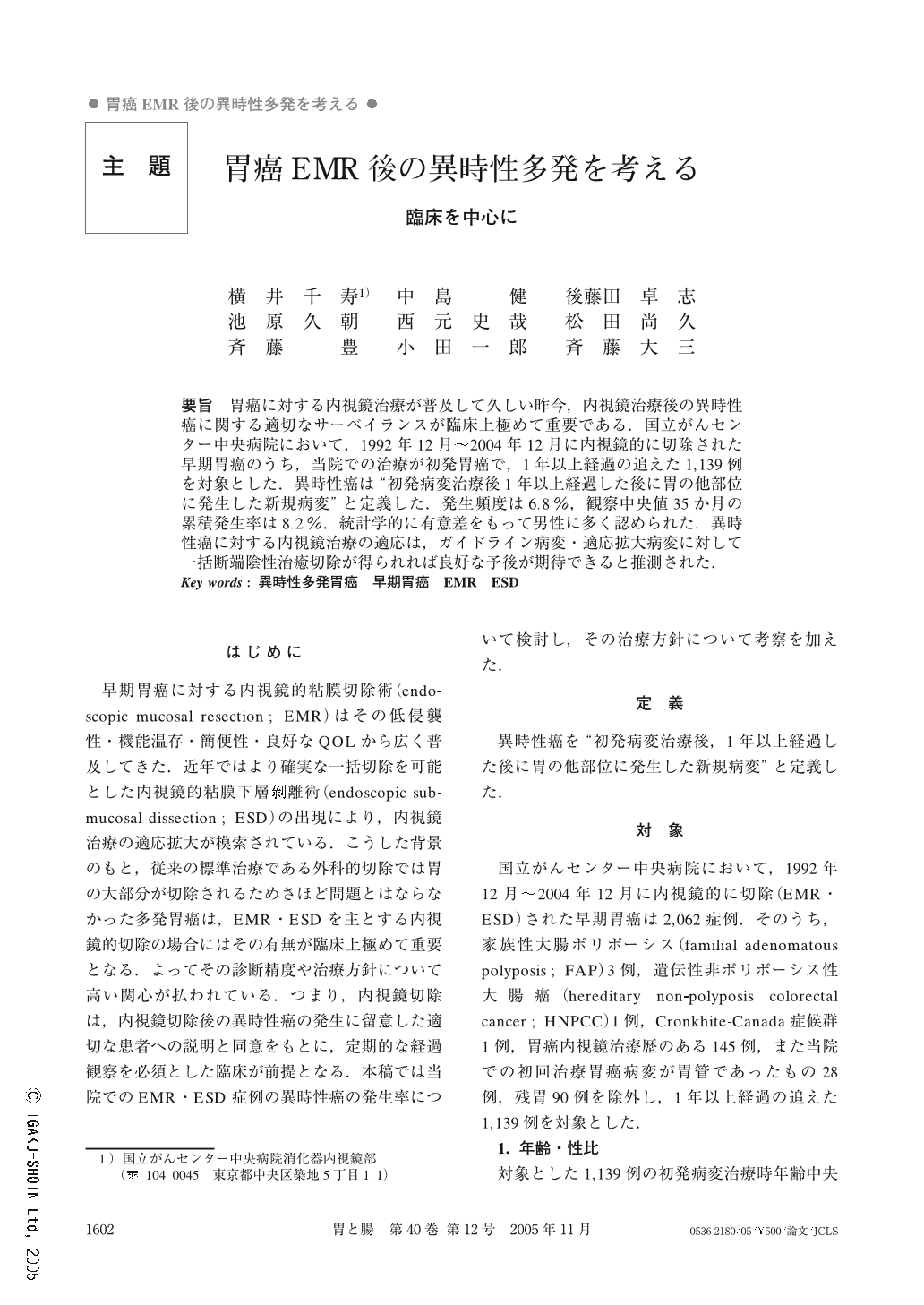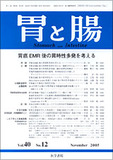Japanese
English
- 有料閲覧
- Abstract 文献概要
- 1ページ目 Look Inside
- 参考文献 Reference
- サイト内被引用 Cited by
要旨 胃癌に対する内視鏡治療が普及して久しい昨今,内視鏡治療後の異時性癌に関する適切なサーベイランスが臨床上極めて重要である.国立がんセンター中央病院において,1992年12月~2004年12月に内視鏡的に切除された早期胃癌のうち,当院での治療が初発胃癌で,1年以上経過の追えた1,139例を対象とした.異時性癌は“初発病変治療後1年以上経過した後に胃の他部位に発生した新規病変”と定義した.発生頻度は6.8%,観察中央値35か月の累積発生率は8.2%.統計学的に有意差をもって男性に多く認められた.異時性癌に対する内視鏡治療の適応は,ガイドライン病変・適応拡大病変に対して一括断端陰性治癒切除が得られれば良好な予後が期待できると推測された.
From December, 1992 to December, 2004, the total number of EMR/ESD cases for early gastric cancer was 2,062 in National Cancer Center Hospital. Among them, we investigated1, 139 cases in order to estimate the frequency of metachronous gastric cancer. We defined metachronous cancer as a newly detected lesion at least1year after the initial endoscopic treatment for a first early gastric cancer. Metachronous gastric cancer was detected in 78 patients out of 1,139 (6.8%). Being a male can be a risk factor statistically, however, age or the initial lesion's condition (multiple or not) can't be indicated as a risk factor. Treatment for metachronous early gastric cancer can be dealt with in the same way as the initial early gastric cancer. In brief, a lesion which meet is in accord with the guideline and expanded criteria for metachronous cancers can be safely treated endoscopically (EMR/ESD), if it can be resected en-bloc. Needless to say, accurate pathological evaluation is essential.

Copyright © 2005, Igaku-Shoin Ltd. All rights reserved.


